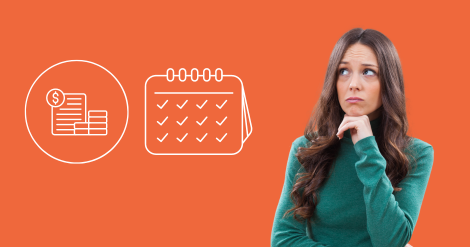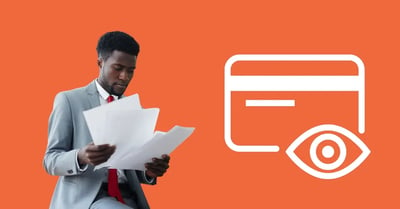Continuous accounts receivable, also known as chronic accounts receivable, refers to the inability of a business to collect outstanding invoices from customers in a timely manner. This can lead to a number of problems, including cash flow issues, increased risk of bad debt, and damage to customer relationships.
Around 81% of businesses have experienced an increase in delayed payments and 25% of bankruptcies can be attributed to late payments, underlining the significant problems that can arise from continuous accounts receivable.
In this article, we will explore the causes and consequences of continuous accounts receivable and provide tips for businesses on how to improve their accounts receivable management practices.
|
|
Why is continuous accounts receivable a problem?
Continuous accounts receivable is a persistent problem for many businesses, and it can have several negative consequences.
Cash flow issues: One of the most immediate impacts of continuous accounts receivable is cash flow problems. When customers don't pay their invoices on time, businesses have less cash on hand to pay their own bills, invest in growth opportunities, and cover unexpected expenses. This can lead to a vicious cycle, as businesses may be forced to borrow money at high-interest rates to cover their short-term cash needs.
Increased risk of bad debt: The longer an invoice goes unpaid, the more likely it is that it will never be paid at all. This is because customers who are slow to pay are often struggling financially themselves and may eventually default on their debts. Bad debt can have a significant impact on a business's profitability, as it represents lost revenue that cannot be recovered.
Damage to customer relationships: Continuous accounts receivable can also damage relationships with customers. When customers don't pay their invoices on time, it sends the message that they don't value the business's products or services. This can lead to resentment and frustration on both sides and make it difficult to do business together in the future.
Legal complications: In some cases, continuous accounts receivable can even lead to legal complications. If a business is unable to collect on an unpaid invoice, it may be forced to file a lawsuit against the customer. This can be a time-consuming and expensive process, and it can further damage the relationship between the business and the customer.
Operational Inefficiencies: Continuous accounts receivable can also lead to operational inefficiencies. When businesses have to spend time and resources chasing down late payments, it takes away from other important tasks, such as sales, marketing, and product development. This can make it difficult for businesses to grow and compete effectively.
Impacts on business growth: Continuous accounts receivable can have a significant impact on business growth. When a business has a large amount of outstanding invoices, it can hinder its ability to invest in new opportunities, hire new employees, and expand into new markets. This can put the business at a competitive disadvantage and make it difficult to achieve its full potential.
What are the signs of continuous accounts receivables?
There are several signs that may indicate a business is experiencing continuous accounts receivable. These include:
1. Consistently high Days Sales Outstanding (DSO)
DSO is a metric that measures the average number of days it takes for a business to collect on its invoices. A high DSO can be a sign that customers are taking longer than normal to pay their bills. This can result from various factors, such as slow payment terms, disputes over invoices, or financial difficulties on the part of customers.
2. Increasing bad debt
Bad debt is the amount of money that a business is owed by customers who are unlikely to pay. An increase in bad debt can be a sign that the business is having difficulty collecting on its invoices. This may be due to poor credit screening practices, ineffective collections procedures, or economic downturns that affect customers' ability to pay.
3. Reliance on short-term loans
Businesses that are experiencing continuous accounts receivable may rely on short-term loans to cover their cash flow needs.This can be a sign that the business is not generating enough cash from its operations to meet its expenses. Short-term loans can be costly and may put the business at risk if it is unable to repay them.
4. Frequent cash flow shortages
Cash flow shortages can be a sign that the business is not collecting on its invoices quickly enough. This can make it difficult for the business to pay its bills and invest in growth opportunities. Cash flow shortages may lead to financial distress and, in severe cases, insolvency.
What causes continuous accounts receivable and how to solve the issue
There are several factors that can contribute to continuous accounts receivable, including:
No credit policy in place
Many businesses, especially small and medium-sized enterprises, operate without a formal credit policy. This can be due to a variety of factors, such as a desire to avoid bureaucracy, a lack of awareness of the benefits of a credit policy, or simply a lack of resources.
Solution
To prevent continuous accounts receivable due to the absence of a credit policy, businesses should consider implementing one. A credit policy outlines the terms and conditions under which customers can purchase goods or services on credit. It typically includes information such as credit limits, payment terms, and late payment fees.
Here are some key steps involved in implementing a credit policy:
- Establish credit criteria. Define the criteria for extending credit to customers. This may include factors such as credit history, financial strength, and industry experience.
- Set credit limits. Determine the maximum amount of credit that each customer can receive. Credit limits should be based on factors such as the customer's creditworthiness and the size of their typical orders.
- Specify payment terms. Clearly state the payment terms, including the due date and any discounts for early payment.
- Communicate the policy. Make sure that all customers are aware of the credit policy. This can be done by including the policy on invoices, order forms, and the company's website.
- Monitor and review. Regularly review the credit policy to ensure that it is effective and up to date. Make adjustments as needed based on changes in the business environment or customer behavior.
By implementing a credit policy, businesses can reduce the risk of continuous accounts receivable and improve their cash flow management.
Not following up with debtors
Failure to promptly follow up with customers who are late on payments can send the message that the business does not prioritize collections, further delaying payments.
Failure to promptly follow up with customers who are late on payments can have serious consequences for a business. It can send the message that the business does not prioritize collections, which can lead to further delays in payments.
Solution
Here are some tips for following up with late-paying customers:
- Send a reminder notice as soon as possible. The sooner you contact the customer, the more likely they are to pay.
- Be polite but firm. Make it clear that you expect payment and that you will take action if it is not received.
- Offer a payment plan. If the customer is unable to pay the full amount immediately, offer them a payment plan that will allow them to pay over time.
- Take collection action if necessary. If the customer does not respond to your reminder notices or payment plan offers, you may need to take collection action. This could include sending the account to a collection agency or filing a lawsuit.
Ineffective invoicing
Inaccurate or incomplete invoices can cause confusion and delays in payment, as customers may need to request corrections or clarification before they can process the payment. Ineffective invoicing processes can have several negative consequences, particularly when invoices are inaccurate or incomplete. Such errors can lead to confusion and delays in payment, disrupting the smooth flow of business transactions.
Solution
To address ineffective invoicing, businesses can implement the following strategies:
- Accurate and complete invoices: Ensure invoices include all necessary information such as the customer's name and address, invoice number, date, description of goods or services provided, quantity, unit price, total amount due, payment terms, and contact details for inquiries.
- Clear and consistent formatting: Standardise invoice formatting to make it easy for customers to understand and process. Use a consistent layout, font, and numbering system for invoices.
- Timely invoicing: Send invoices promptly after the delivery of goods or services to avoid delays in payment. Consider setting up an automated invoicing system to streamline the process.
Debtors are ignoring payment requests
Some customers may intentionally ignore payment requests, hoping that the business will eventually give up on collecting the debt.Some customers may intentionally ignore payment requests, hoping that the business will eventually give up on collecting the debt. This behavior is known as "debt avoidance," and it can be a significant problem for businesses.
Solution
Companies must have a strategy to deal with debtors who ignore payment requests.
- Sending regular payment reminders. Businesses should send payment reminders to debtors who are late on their payments. These reminders should be clear and concise, and they should state the amount of the overdue invoice and the due date.
- Offering flexible payment options. Businesses may want to consider offering flexible payment options to debtors who are struggling to pay their bills. This could include allowing debtors to pay in installments or extending the due date of the invoice.
- Contacting debtors by phone. If a debtor is not responding to payment reminders, businesses may want to try contacting them by phone. This can be a more personal way to communicate with debtors and can help to resolve any outstanding issues.
- Taking legal action. If all else fails, businesses may need to take legal action against debtors who refuse to pay their bills. This can be a costly and time-consuming process, but it may be necessary to recover the money that is owed.
By taking these steps, businesses can reduce the risk of debt avoidance and protect their financial well-being.
Continuous accounts receivable: in summary
Continuous accounts receivable occurs when businesses have a large amount of outstanding invoices that customers have not yet paid. This can be caused by various factors such as a lack of a credit policy, ineffective follow-up with debtors, ineffective invoicing, or customers intentionally ignoring payment requests.
Continuous accounts receivable can have severe consequences for businesses, including hindered growth, increased bad debt, reliance on short-term loans, and frequent cash flow shortages. To prevent continuous accounts receivable, businesses should implement a credit policy, promptly follow up with late-paying customers, improve their invoicing processes, and address customers who ignore payment requests.
Consider implementing automation tools like Chaser, which can help minimize receivables and protect your cash flow. By automating the accounts receivable process, you can reduce the risk of late payments, bad debts, and ensure a smoother and more efficient collection process.




